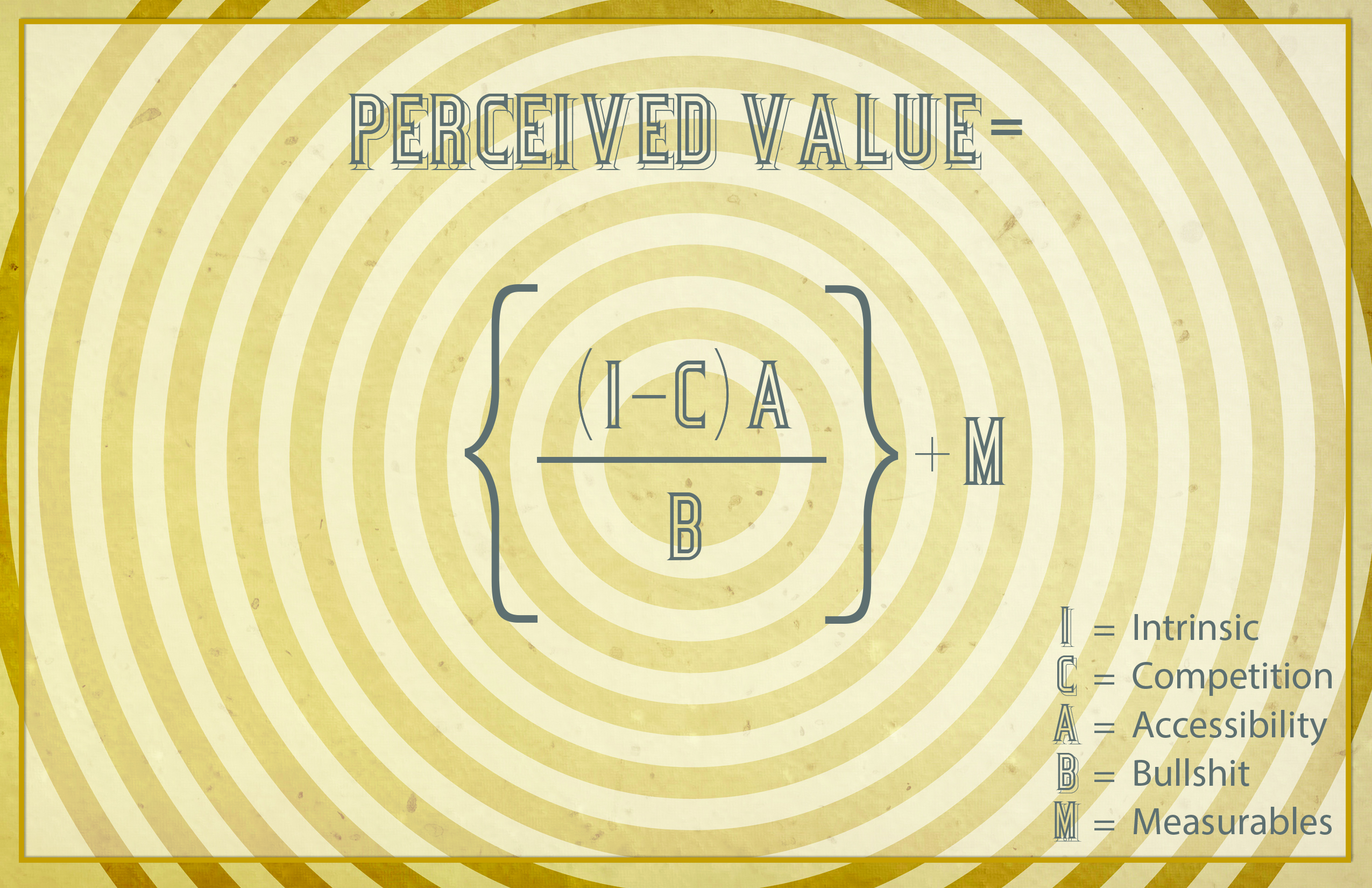Why do people go to church? Because they perceive it has value. They want to grow spiritually, find wholeness, relieve guilt, and church promises to help. But church isn’t the only place offering this help. Additionally, sometimes church does not deliver. Here, then, is a simplified equation explaining how people perceive church value.
I=Intrinsic value. These are the reasons people show up to church, including things like finding hope and encouragement. Another intrinsic value is learning about God.
C=Competition. The competition is anything that offers the same thing (i.e. Oprah, therapy, listening to music, or even spending time alone).
A=Accessibility. This is where we must ask if what we are offering actually works for people. We must be sure they are able to understand it and have a way to actually connect it to their daily lives.
In the following equation we can determine perceived value by subtracting C from I, multiplying it by A, and dividing by B (Bullsh*t—all the things that limit what’s good about church. This includes when we let ego, chauvinism, carelessness, hypocrisy, and the like get in the way. B often amounts to lack of planning, the feeling like we are always talking about money, too much change, and a sense of haughtiness).
The final variable in the equation is M, the measurables. (For churches, M can be more people coming on Sundays, more people giving, more people getting involved. It is also seen in the lives of people coming to church, when their marriages are better, their finances are more stable, they feel a sense of God’s presence in their lives from day to day.)
If people are going to devote their time to church, they must perceive its value to be higher and more lasting than whatever competition is out there. This equation offers a somewhat simplified way for churches to be constantly checking themselves and ensuring that what they offer is of real value to real people.
fossores
Related posts
Categories
Category Cloud
Tag Cloud
Recent Posts
- Victors and Victims November 6, 2018
- 3 Hacks for Happiness October 29, 2018
- Hope Against Death September 20, 2018
- The Shape Of The Cross September 19, 2018


